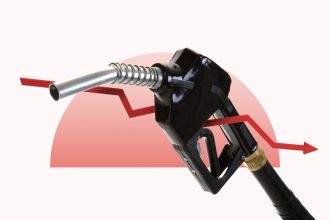Key Takeaways
- High-yield savings and money market accounts may offer higher returns with more accessibility.
- CDs may offer higher rates but require keeping your money locked up in a bank for a set term unless you pay early withdrawal penalties.
- Treasury bills are low-risk, but buying and selling them entails maintaining a brokerage account or an online account at TreasuryDirect.
- Short-term bonds are low-risk, but some of these instruments can be less liquid than other options.
Whether you’ve earned a bonus at work or made a profit selling your house, having extra money gives you a chance to grow your
The best place to save extra money depends on your timeline and goals. High-yield savings accounts offer the best combination of safety and returns for short-term goals, currently earning up to 4.40 percent APY with easy access to funds. For longer-term savings, certificates of deposit (CDs) can provide higher fixed rates but lock up your money. Consider your need for liquidity, risk tolerance and timeline when choosing where to park your cash.
Where is the best place to put my money right now?
Whether you’ve received a work bonus, sold your house or simply accumulated extra cash, deciding where to save requires balancing three key factors: return on investment, liquidity and safety. The right choice depends on when you’ll need the money and your comfort level with different account types.
Current interest rate environments make this an especially important decision. With high-yield savings accounts offering competitive rates and the Federal Reserve’s recent policy changes, your extra money should work hard for you to outpace inflation.
“I always tell people to think about their money in time buckets. Money you might need in the next six months belongs in a high-yield savings account, regardless of the rate. Money for goals 1-5 years out can go in CDs for higher returns. It’s about matching your timeline to the right account type, not just chasing the highest rate.”
— Hanna Horvath, CFP & Managing Editor at Bankrate
1. High-yield savings account
A high-yield savings account offers the sweet spot between earning power and accessibility for most savers. Unlike traditional savings accounts that pay as little as 0.01 percent APY, top high-yield accounts currently earn over 4 percent APY.
These accounts work best for emergency funds, short-term goals under two years, and any money you might need quick access to. All deposits are FDIC insured up to $250,000 per depositor. You’ll also get easy access through online banking and mobile apps without lock-up periods or early withdrawal penalties.
The main limitation is that some banks restrict withdrawals to six per month, and rates can fluctuate with market conditions. To maximize your earnings, look for accounts with no monthly fees and low minimum balance requirements. Online banks typically offer the highest rates since they don’t maintain expensive branch networks.
2. Certificate of deposit (CD)
Certificates of deposit work well when you have a specific timeline for your money and want to lock in today’s rates. CDs typically offer higher yields than savings accounts in exchange for agreeing to leave your money untouched for a set period. Current rates range, up to around 4.50 percent APY, for terms from six months to five years. Common types of CDs include:
- Traditional CD: This is the most common variety of CD, and it pays a fixed yield throughout its entire term. Taking out the funds before the term ends results in an early withdrawal penalty.
- No-penalty CD: Also known as a liquid CD, this account allows you to withdraw the funds early, although no-penalty CDs usually pay lower yields than traditional CDs.
- Bump-up CD: This CD typically allows you to request one rate bump throughout the term, if rates on CDs have improved.
Consider CD laddering as a strategic approach — opening multiple CDs with different maturity dates provides both higher returns and periodic access to your money as each CD matures.
3. Money market account
Money market accounts bridge the gap between savings and checking accounts, offering higher yields than traditional savings with some transaction features like checks and debit cards. They work particularly well for larger balances where you want higher yields but occasional access to funds.
These accounts often pay higher rates than regular savings accounts and may include check-writing privileges and debit card access. Like other deposit accounts, they’re FDIC insured and often feature tiered interest rates that reward larger balances. The trade-off is typically higher minimum balance requirements (often $1,000 to $10,000) and monthly maintenance fees if you fall below the minimum.
4. Checking account
While most checking accounts earn little to no interest, some high-yield checking accounts offer competitive rates while offering full liquidity and transaction capabilities. These accounts work best for money you use for monthly expenses but want to earn interest on.
Look for accounts with competitive APYs (though typically lower than savings accounts), no monthly maintenance fees, unlimited transactions and features like ATM fee reimbursements and mobile check deposit. Many high-yield checking accounts have requirements like minimum monthly direct deposits or debit card usage to earn the advertised rate.
5. Treasury bills
U.S. Treasury bills offer government-backed safety for conservative savers, especially those with money exceeding FDIC insurance limits. T-bills are short-term debt obligations with maturities of one year or less, backed by the full faith and credit of the U.S. government.
These securities are highly liquid since you can sell them before maturity, and the interest is exempt from state and local taxes. You can purchase T-bills directly through TreasuryDirect.gov or through a brokerage account. They’re sold at a discount and pay full face value at maturity, with terms available from four weeks to 52 weeks. Current yields often compete with high-yield savings accounts.
6. Short-term bonds
For money you won’t need for several years, short-term bond funds can offer higher potential returns than savings accounts, though with some risk to principal. Unlike bank accounts, bond values can fluctuate based on interest rate changes and credit quality. Check out Bankrate’s picks for the best short-term bond funds.
Treasury bond funds provide maximum safety, while high-grade corporate bond funds offer higher yields with slightly more risk. Short-term bond funds help minimize interest rate risk compared to longer-term bonds. These investments work better for timelines of three years or longer since they can lose value in the short term. Remember that bond investments aren’t FDIC insured and can lose value, making them less suitable for emergency funds or immediate needs.
7. Riskier options: Stocks, real estate and gold
For longer-term goals and money you can afford to see fluctuate, higher-risk investments might make sense as part of a diversified strategy. Stock market investments like S&P 500 index funds have historically averaged 10% annual returns over long periods, while target-date funds automatically adjust risk based on your timeline.
Options to invest in real estate include REITs (Real Estate Investment Trusts) — which offers offer easier entry than direct property ownership — buying a rental property or joining a real estate crowdfunding platform. Only consider these options for money you won’t need for at least five to ten years and can afford to lose in the short term.
Another popular investment option is gold, especially during tough economic times. Some investors see gold as a safe place to park their money, while others are more skeptical. Nonetheless, the decision to invest in gold should be a personal one.
How to choose the right savings strategy
The best place for your extra money depends on your timeline, risk tolerance and liquidity needs. For immediate access (zero to six months), use a high-yield savings account. For goals six months to two years away, consider CDs or money market accounts for higher yields. Money you won’t need for two to five years can go in longer-term CDs or short-term bond funds, while goals beyond five years might include growth investments.
Your risk tolerance also matters. Conservative savers should stick with FDIC-insured accounts and Treasury securities. Moderate risk tolerance allows for a mix of safe savings and short-term bond funds. Aggressive investors could include stock market investments for long-term goals.
The key is not putting all your money in one place. Diversifying across different account types provides both safety and growth potential while ensuring you have access to funds when needed.
Should you work with a financial advisor?
If you have substantial extra money or more complex financial goals, consider working with a qualified financial advisor. A fiduciary advisor can help create a comprehensive plan that balances your short-term liquidity needs with long-term wealth-building goals.
Professional help makes sense when you have more than $250,000 to manage, multiple financial goals like retirement and children’s education, need tax-efficient strategies or want ongoing portfolio management.
Bottom line
The best place to save your extra money isn’t one-size-fits-all. Start with a solid foundation of emergency savings in a high-yield savings account, then consider CDs or money market accounts for money you won’t need immediately. For longer-term goals, a mix of safe savings and growth investments often provides the best balance of security and returns.
Related reading:
Why we ask for feedback
Your feedback helps us improve our content and services. It takes less than a minute to
complete.
Your responses are anonymous and will only be used for improving our website.
Help us improve our content
Read the full article here
















